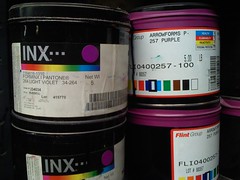 Print newsletters have been the default communications tactic for nonprofits forever. Even though I now believe the default should be an e-newsletter, and we are seeing more and more nonprofits drop their print newsletters in favor of email, print still remains an important tactic for many organizations.
Print newsletters have been the default communications tactic for nonprofits forever. Even though I now believe the default should be an e-newsletter, and we are seeing more and more nonprofits drop their print newsletters in favor of email, print still remains an important tactic for many organizations.
If you decide that sending a print newsletter or other print communications really is the best approach for your audience and for your organization, consider these five steps to reduce your costs.
Ask Your Printer to Recommend Changes. One of the best untapped resources for lowering your print budget is your printing provider. Call up your account representative at your printer and tell him or her that you are considering dropping the newsletter entirely because of the expense of producing it (you won’t be the only one).
Explain that you would like to keep sending it out, but you need to make some changes to make it more affordable. Ask for suggested changes to the paper, format, length, inks, etc. that could bring down the price. Most printers will jump on this right away; if they don’t, take copies of your current newsletter to other competitive print shops and see what they’d suggest.
Reduce the Size. Paper is a huge portion of your printing costs (typically 30-50%), so cutting the number of pages and reducing the size of the pages can significantly reduce your printing costs. The pieces of paper that are run through the printing press are much larger than what you end up with in your hands. Reducing the finished size of your publication by as little as a half-inch can change the way your individual pages are arranged on those bigger sheets of paper, which means you have to pay for fewer of those big sheets. Changing the size of your document can also reduce your mailing costs. If your printer is also your mailhouse, ask for revised mailing estimates as well.
Use Thinner, Off-White Paper. Changing the weight of the paper (how thick it feels) and the brightness of the paper (how white it is) can also reduce the cost. Just how white does the paper really need to be, especially if you are covering it mostly with text? Subtle changes in brightness that few people will notice can save you quite a bit of money long-term. And just how heavy should each sheet feel in your hands? The brighter white and the heavier a sheet of paper is, the more expensive the paper will be. The difference in cost between the same sheet of paper in a different weight can be as much as 10-15% of your paper costs. One cost-effective approach for annual reports or other larger documents is to use a heavier, more expensive paper for the cover to give the document the right look and feel, but to use a more affordable house sheet of paper for the insides.
Don’t Be Too Picky About Colors. The more colors you use in traditional offset printing, the more expensive your print job will be. Even if you decide to print in full-color, you can still reduce your expenses by printing strictly in four-color process, rather than requesting full-color plus specific PMS colors. Instead, convert all of your PMS colors to their CMYK equivalent. You can use the Pantone Color Bridge to see the differences in the colors using the two different processes.
The only time this has been a real issue in my experience is when a nonprofit is working with a corporate sponsor that insists their logo appear in certain PMS colors. Depending on the actual colors, conversion to CMYK may not be a big deal and the sponsor may be just fine with that. But if they insist on the additional PMS colors, you may want to consider asking that sponsor to cover the cost difference, if it really is a significant increase in cost (ask your printer to provide specifics).
Prepare Your Files Correctly. The further along in the printing process that you get, the more expensive it is to make changes. Make sure your documents are proofread several times and approved by everyone who needs to see them well before you send them to the printer. Also ensure that you have prepared your digital files properly for your printer. It’s not as simple as handing over the file from the computer program you used to create the document. You’ll also need to supply copies of fonts and high-resolution images. Using the wrong or mixed color profiles is another common problem. (Don’t know the difference between RGB, PMS and CMYK? Talk to your printer or a graphic designer before submitting your files to a printer). When your printer has to fix any of these problems with your files, you get billed for them.
What tips can you share for reducing your print expenses? Leave a comment on the blog.





